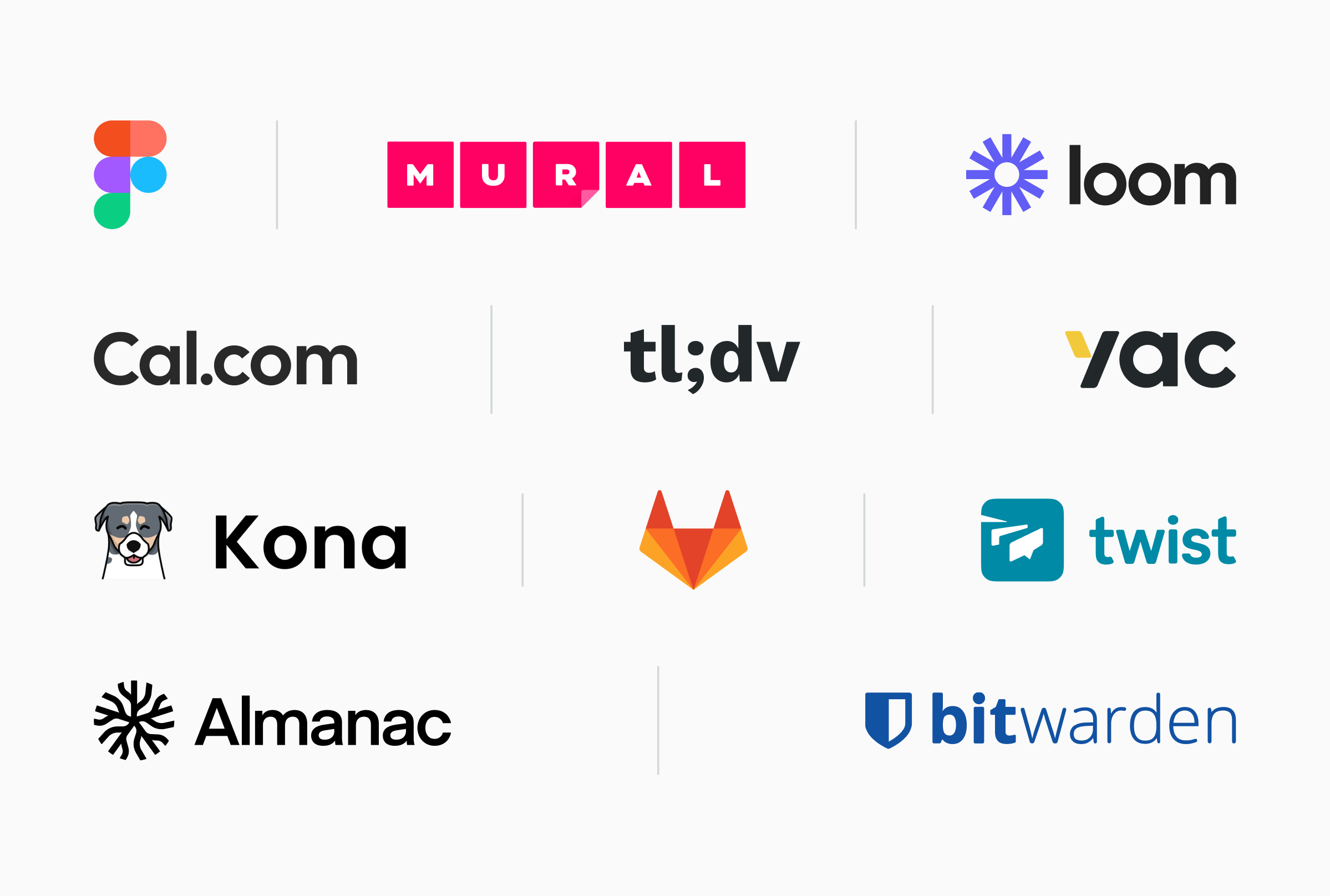
These are the essential tools we recommend for your async collaboration stack and how each can fit into your async workflows...
Loom for async video
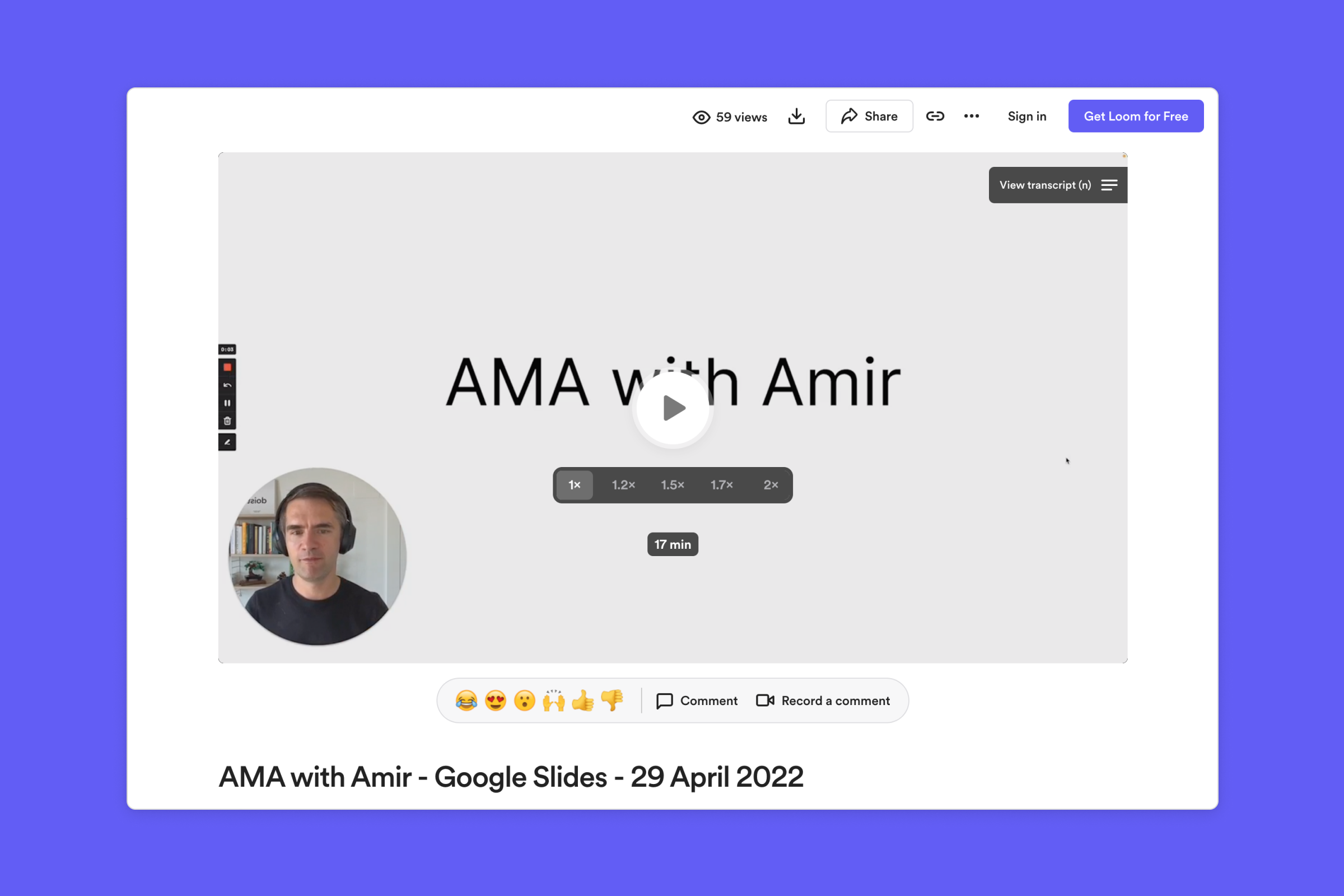
Whether you're demoing a feature, reporting a bug, or walking people through a new design, a video can be worth a thousand words. That's why a screen-recording tool is a must-have in your async arsenal.
Loom is the async video tool our own team defaults to the most. You can choose to record your screen, your web cam, or both so people can put a face to what you're saying. Here's an actual internal AMA with our founder and CEO where we collected questions from the team in a Twist thread and Amir recorded his answers in Loom.
Yac for async audio
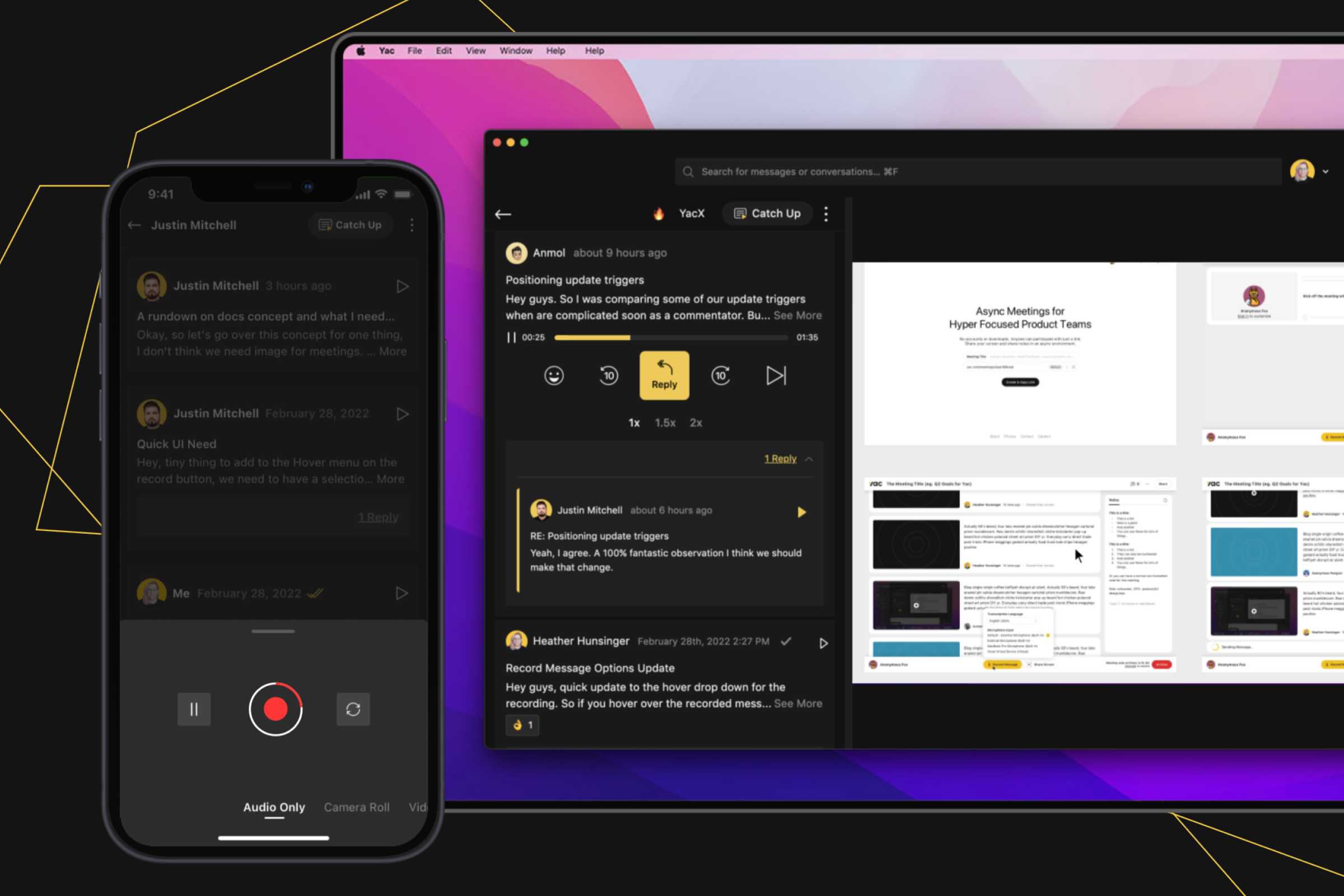
While the curmudgeon inside you may cringe when you receive a voice recording in WhatsApp or over DM, we can't deny that there's a unique place for voice messages in your async toolkit. The folks over at Yac have built just the app to facilitate your team's async audio (and reduce the amount of meetings you have).
Yac combines the speed of audio with the searchability of written text. The app has a simple UI that allows you to send audio messages or screen recordings 1:1 or to a group of people as part of a discussion. Best of all, Yac instantaneously transcribes all your audio messages really, really well so everyone can search and skim for key information later. You can save, export, and/or share your audio natively or via integrations with other team communication tools.
Mural for async whiteboarding

There's a common misconception that teams sacrifice creativity and innovation when they collaborate asynchronously. But research shows that async brainstorming actually results in more novel ideas than more traditional, real-time approaches.
MURAL offers a free digital whiteboard collaboration space where your team can explore ideas in a visually richer and less restrictive space than messaging tools like Twist. Teammates can doodle, create shapes and connections, add sticky notes, express themselves with GIFs, and more. Avoid common biases like groupthink by turning on private mode to hide individual contributions until everyone's had a chance to weigh in. Or set up an async voting session to quickly align and prioritize.
You can easily share a link to any mural in your team messaging tool along with a summary of key takeaways so people can search for and find it again later.
Almanac for documentation
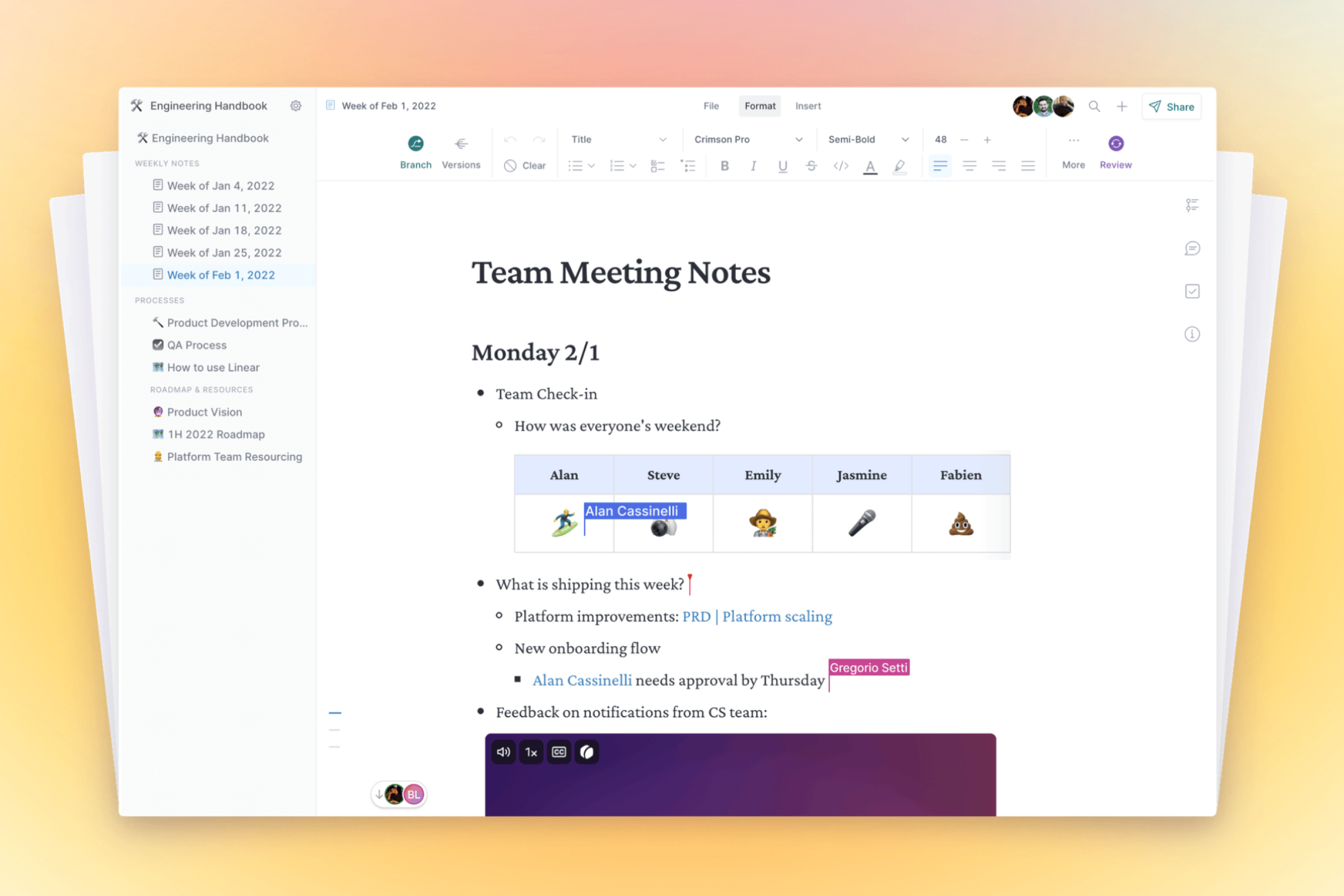
In an async-first workplace, teammates need to be able to search for, find, and interact with the information they need without needing to ask for it first. Self-serve documentation lays an absolutely essential foundation for async success.
Almanac – a documentation tool built specifically for async-first teams – definitely fulfills this role. Think of it as a one-stop shop for document editing (replacing Google Docs) and team knowledge building (replacing Notion or other internal handbooks/wikis).
As a company, their passion for building tools to power an async future is evident in the features they've baked into their app – things like bi-directional links for building an interconnected knowledge base and robust version control that allows the team to make suggestions and changes before merging them into the main document.
Figma for async design

We'll admit: A few years ago, we were skeptical of all the Figma fandom bubbling up all over our company and the web. Could it really be as awesome as everyone was hyping it up to be? Frankly, yes. Yes it is.
Figma dramatically improved the way our design, marketing, and front-end engineering teams collaborate, saving us days (or weeks? months?!) of feedback ping-pong across time zones and disciplines. Used as both a company-wide design library as well as a home for in-progress design mock-ups, it gives folks (1) access to the tools they need without having to track other designers down, (2) a place where people of varying skill sets can easily collaborate, and (3) a single source of design truth. Hands-down a must-have for any async team.
GitLab for async development

Any organization seeking to make it remotely or asynchronously will recognize the name GitLab. They're an OG influencer of remote best practices and eater of their own async dogfood with 1500+ team members across 60+ countries.
Their platform allows software developers to collaborate on writing code more quickly and efficiently (and asynchronously). GitLab offers the most competitive suite of DevOps solutions in one single platform, as compared to GitHub, which only offers CD/CI through third party integrations. It also offers a slightly more rigorous method of code reviews – a multi-step process vs. GitHub's single review allowance.
At the end of the day, opting to use GitLab means opting to support a company whose values – Collaboration, Results, Efficiency, Diversity, Inclusion & Belonging, Iteration, and Transparency – may possibly align much more with your own. For some teams, that's reason enough to invest in the tool.
Cal.com for async scheduling
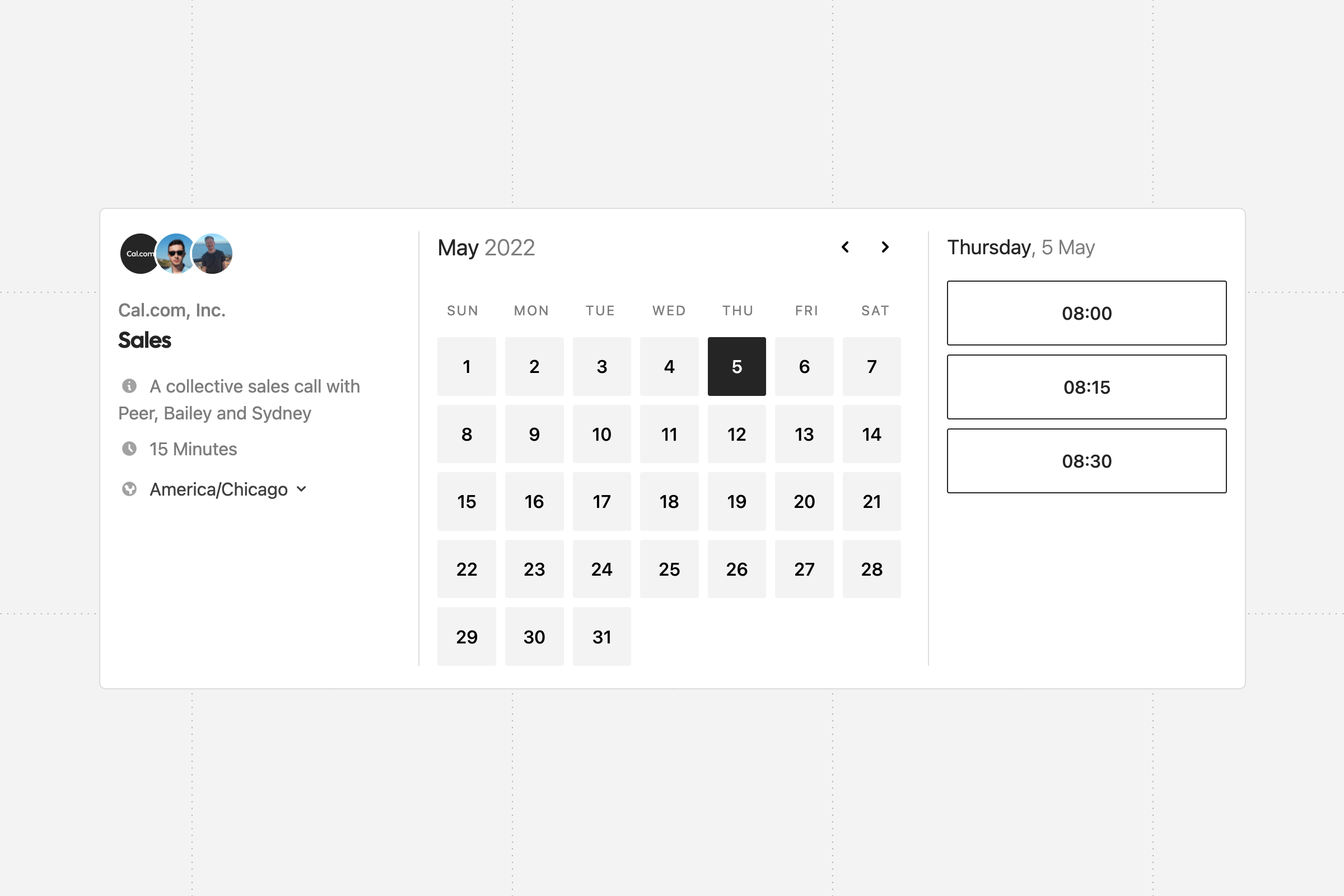
Successful async communication is all about cutting down on the number of back-and-forths needed to communicate. And when it comes to unnecessary back-and-forths, the lowest of low-hanging fruit is finding a meeting time that works for everyone.
That's where an async scheduler like Cal.com pays for itself in time and hassle saved. On the occasions when you do need to schedule a meeting, simply share a link with your availability and let the recipient pick a time that works best for them. Boom! A day's worth of back-and-forth scheduling becomes a few simple clicks. Best of all, the event gets automatically added to both people's calendars so there's never any time zone confusion.
Unlike its competitors, Cal.com is fully open-source, gives you complete ownership over your data, and makes it easy to host on your own domain for a fully branded experience. It also gives you the option to screen booked meetings and only schedule the meeting requests you confirm. (As a bonus, the company behind the product is dedicated to radical transparency and operating asynchronously so you can feel good about where you're putting your money if you upgrade from the free plan.)
TL;DV for async meeting recaps

Sharing meeting recordings for people who couldn't attend is now a common async practice. The problem is, people rarely go back to watch a meeting recording. When they do, they have to wade through a lot of irrelevant information to get to the stuff that's relevant to them. That's where TL;DV comes in.
TL;DV lets you tag and summarize key moments in meetings as you go so people can quickly see what was discussed and jump straight to specific points of interest. It turns real-time conversations into long-term information that's useful to your whole organization far into the future.
Kona for async check-ins
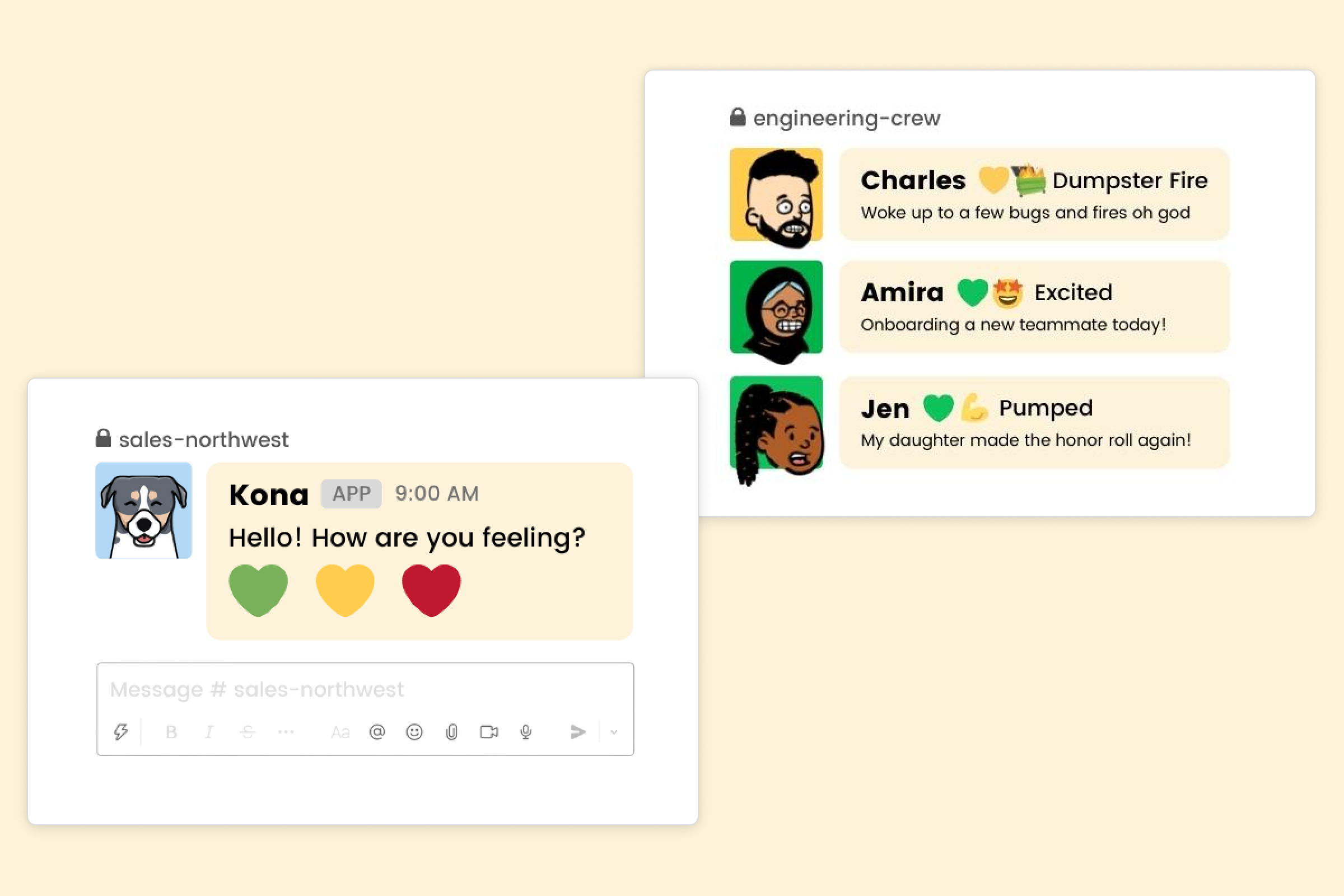
When you don't have general office vibes to fall back on, it's easy to miss what's really going on with the team: What's morale like? How engaged are people feeling? What problems are they encountering?
Kona makes it easy to track team well-being in a low-key way and get ahead of problems before people start burning out. Send a custom, automated check-in every day or week and let your team respond on their own schedules. Kona check-ins are "deliberately transparent" to build trust and vulnerability and help your team connect on a human level. The app aggregates key trends, helping team leaders come prepared for 1:1s, measure the impact of new policies, and generally keep a finger on the pulse of their teams.
In our decade of experience, async doesn't have to mean impersonal. New tools like Kona are an exciting step forward in cultivating the human side of async-first work.
Bitwarden for team password management

In an async-first workplace, having to ask someone for a login can lead to hours-long delays. That's why a team password manager is a must for async collaboration.
With Bitwarden, the whole team can find usernames and passwords in one place and the built-in authenticator code generator makes 2FA a breeze even for shared logins. Admins can control access to password collections so people only have access to the logins they need. You can rest assured that your accounts are as secure as possible without slowing down your team's work.
Twist for async messaging
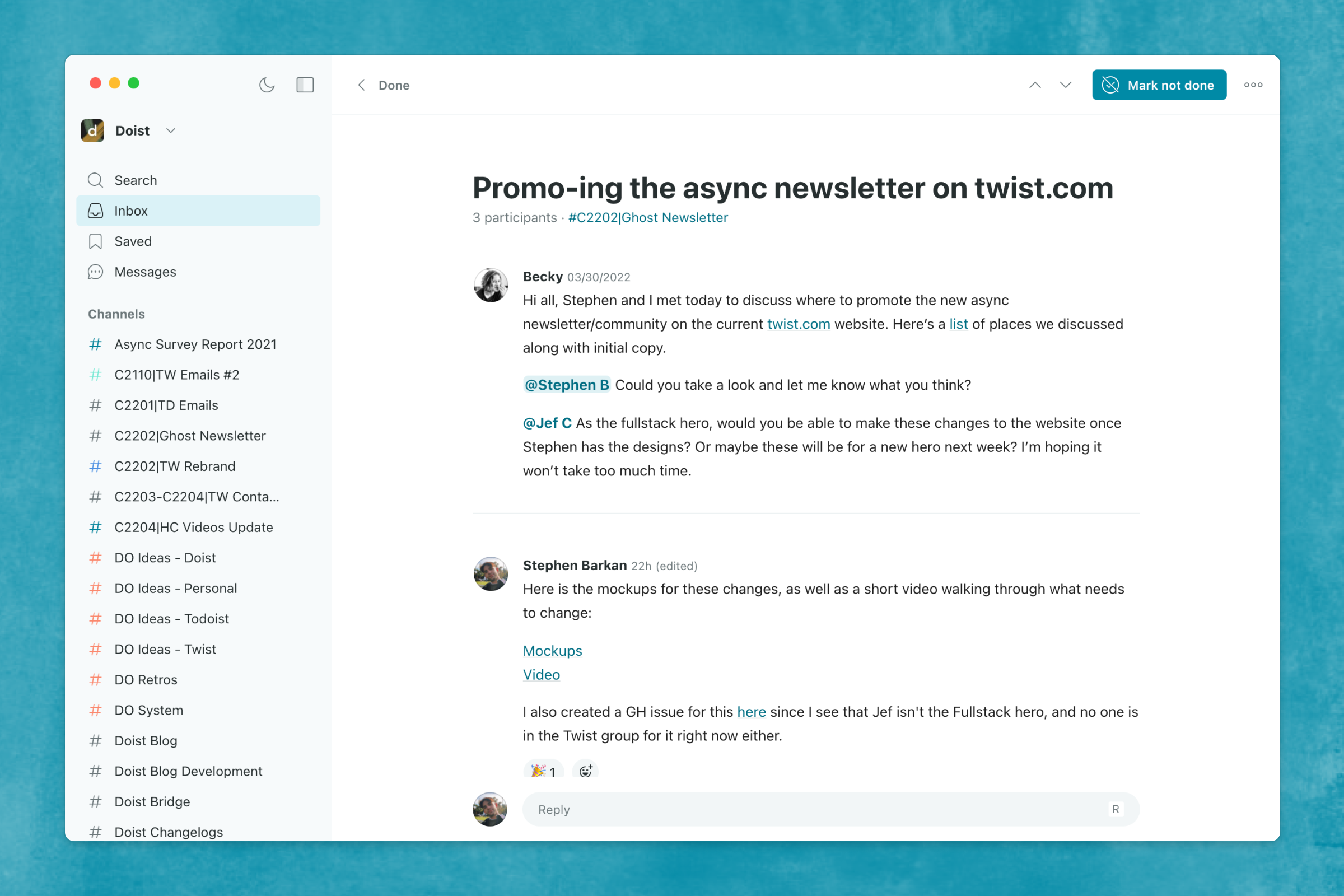
Real-time team chat apps like Slack, Teams, and Discord are the right tools for the wrong way of working. They’re built for instant communication that interrupts your focus, encourages everyone to be constantly available to respond, and prevents teams from doing the deep work that matters.
We know because we used Slack ourselves for several years before looking for a more async alternative...and not finding a single one on the market. That's why we built Twist.
From day one, we designed Twist to make asynchronous communication the default. For example, conversations are organized into threads, keeping team discussions on topic and in context. Forever. That means you can truly disconnect to focus on deep work, or enjoy your evening, and your conversations won't be buried in chitchat by the time you get back.
This kind of async messaging allows people to truly work on their own schedule and gives all employees an equal opportunity to participate in discussions regardless of time zone. Plus, our fully remote, async-first company is independent and bootstrapped. That means we can focus on improving the product with people in mind, not shareholders.
Async as default will be the future of high-performance startups...the tools to support this are still in the Bronze Age, but it's going to happen. https://t.co/eKwXKUbYyi
— Alexis Ohanian 7️⃣7️⃣6️⃣ (@alexisohanian) February 22, 2022
Collaboration software is constantly evolving as more companies adapt to the kind of remote, async-first workplace their employees are demanding. We'll be keeping this page up-to-date with the latest!
